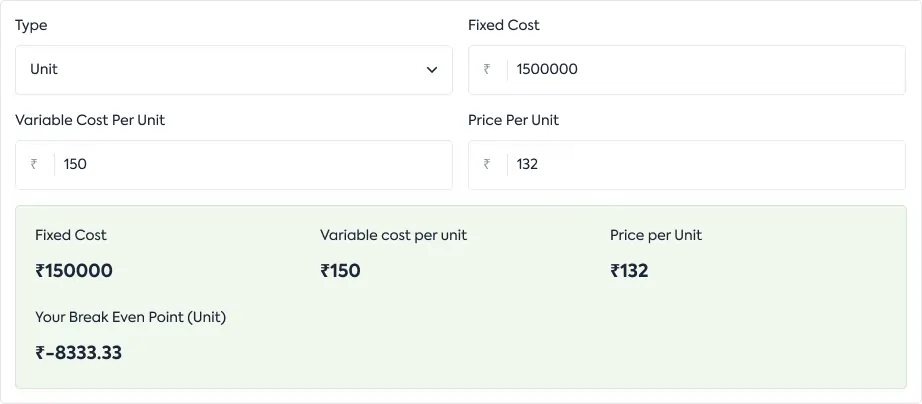Grab a chance to avail 6 Months of Performance Module for FREE
Book a free demo session & learn more about it!
-
Will customized solution for your needs
-
Empowering users with user-friendly features
-
Driving success across diverse industries, everywhere.
Grab a chance to avail 6 Months of Performance Module for FREE
Book a free demo session & learn more about it!
Superworks
Modern HR Workplace
Your Partner in the entire Employee Life Cycle
From recruitment to retirement manage every stage of employee lifecycle with ease.


Seamless onboarding & offboarding
Automated compliance & payroll
Track performance & engagement

Inventory Turnover Ratio Calculator: A Tool for Inventory Management Analysis
An Inventory Turnover Ratio Calculator is a financial tool used by businesses to assess their efficiency in managing inventory. It helps companies measure how quickly they are selling their inventory and replenishing stock, providing insights into inventory management practices. This guide aims to explain the purpose of an Inventory Turnover Ratio Calculator, how it works, key considerations, and the benefits it offers.
What is an Inventory Turnover Ratio Calculator and its Purpose?
An Inventory Turnover Ratio Calculator is a tool designed to calculate the inventory turnover ratio, which measures the number of times a company sells and replaces its inventory within a specific period, usually a year. Its purpose is to evaluate how effectively a company is managing its inventory and identify areas for improvement.
How does an Inventory Turnover Ratio Calculator Work?
Users input specific details such as the cost of goods sold (COGS) and the average inventory level into the Inventory Turnover Ratio Calculator. The calculator then computes the inventory turnover ratio by dividing the COGS by the average inventory level, providing a measure of how efficiently the company is selling its inventory.
Key Considerations in Inventory Turnover Ratio Calculation:
-
Cost of Goods Sold (COGS):
The total cost incurred by a company to produce or purchase the goods sold during a specific period, typically calculated as the opening inventory plus purchases minus closing inventory.
-
Average Inventory Level:
The average value of inventory held by the company over a specific period, calculated by adding the opening and closing inventory levels and dividing by two.
Streamline Payroll Management Effortlessly! Try Our Software Today.
Benefits of Using an Inventory Turnover Ratio Calculator:
-
Efficiency Assessment:
The calculator helps companies assess their efficiency in managing inventory by providing a quantitative measure of inventory turnover.
-
Identifying Slow-Moving Inventory:
A low inventory turnover ratio may indicate excess or obsolete inventory, allowing companies to identify slow-moving items and take corrective action, such as discounting or liquidation.
-
Optimizing Inventory Levels:
By analyzing the inventory turnover ratio, companies can optimize their inventory levels, ensuring adequate stock availability while minimizing carrying costs and the risk of inventory obsolescence.
Example of Inventory Turnover Ratio Calculation:
Suppose a company has COGS of ₹1,00,000 and an average inventory level of ₹20,000. Using the Inventory Turnover Ratio Calculator, the inventory turnover ratio is calculated as COGS ÷ Average Inventory Level, resulting in a ratio of 5. This indicates that the company sells and replaces its inventory five times per year.
FAQs for Inventory Turnover Ratio Calculator:
1. What is the significance of using an inventory turnover ratio calculator in business operations?
An inventory turnover ratio calculator provides valuable insights into how efficiently a company is managing its inventory by quantifying the frequency of inventory turnover. It helps businesses assess their inventory management practices and identify areas for improvement.
2. How can businesses interpret the results obtained from an inventory turnover ratio calculator?
A high inventory turnover ratio suggests that inventory is selling quickly, indicating efficient inventory management and strong sales performance. Conversely, a low inventory turnover ratio may indicate excess inventory levels, slow-moving items, or ineffective sales strategies.
3. Can the inventory turnover ratio calculator be used to assess the effectiveness of inventory management strategies over time?
Yes, businesses can track changes in their inventory turnover ratio over different periods to evaluate the impact of inventory management strategies, pricing adjustments, marketing campaigns, or changes in market demand on inventory turnover and overall business performance.
4. How can businesses improve their inventory turnover ratio based on insights obtained from the calculator?
Businesses can improve their inventory turnover ratio by implementing strategies such as optimizing inventory levels, reducing excess inventory, identifying and liquidating slow-moving items, improving forecasting accuracy, and streamlining supply chain processes.
5. Are there industry benchmarks or standards for assessing what constitutes a good inventory turnover ratio?
While ideal inventory turnover ratios vary by industry and business model, a higher inventory turnover ratio is generally preferred as it indicates efficient inventory management and faster cash conversion. However, businesses should consider industry norms, seasonality, and specific business objectives when evaluating their inventory turnover ratio.
Conclusion:
An Inventory Turnover Ratio Calculator is a valuable tool for businesses to evaluate their inventory management efficiency and identify opportunities for improvement. By calculating the inventory turnover ratio, companies can optimize their inventory levels, reduce carrying costs, and enhance overall operational performance.
